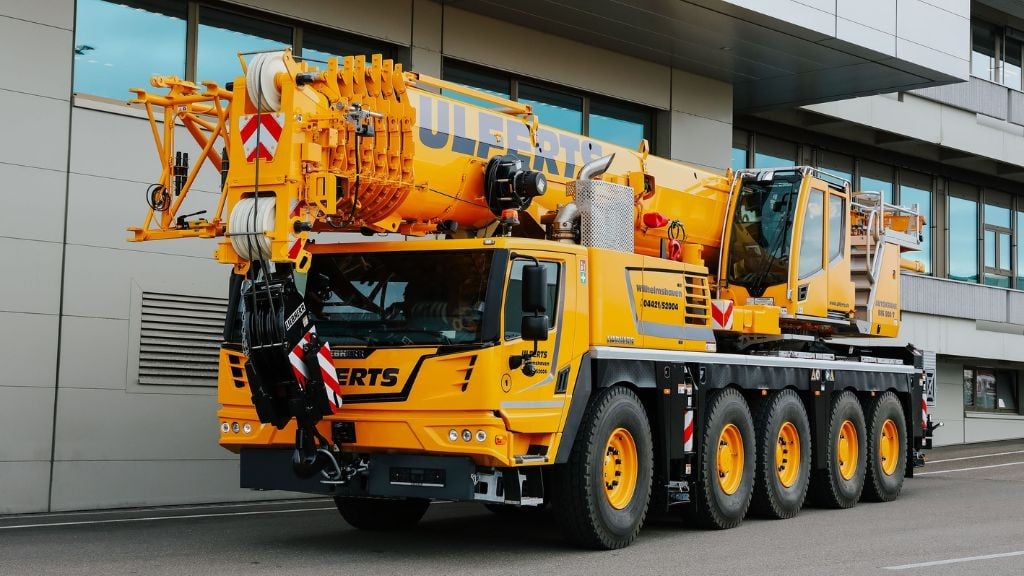Liebherr ships its first mobile crane with all-new driver assistance system
The LTM 1110-5.2 mobile crane is equipped with cameras and sensors to safeguard blind spots

Temmo Niekamp, joint head of the Ulferts Group with Hermann Ulferts, visited the Liebherr plant in Ehingen in person to collect the Group's new LTM 1110-5.2 mobile crane. The 5-axle crane is the first to be shipped with advanced driver assistance systems.
Features on the LTM 1110-5.2 mobile crane
The LTM 1110-5.2 features brand new technologies, cost-effectiveness, and comfort when travelling on roads and on construction sites. Variable axle loads, as well as the 60-metre-long telescopic boom, are just some of the 5-axle crane's other advantages. The LICCON3 crane impresses with its simple yet sophisticated crane control and its convenient design.
The LTM 1110-5.2 mobile crane marks the introduction of the new driver assistance system. "The new systems support and relieve crane operators significantly and make their everyday work easier. They allow the operators to monitor areas that were previously difficult or even impossible to see", explains Niekamp.
More safety on the road
The moving-off information system (MOIS) is used if there is a person in front of the crane. Due to their height, children in particular are impossible to see from the driver's cab. Visibility is also hampered by the hook block. Two cameras scan the front area and provide the crane operator with a visual and audible warning, which appears directly on the digital cockpit display.
The blind spot information system (BSIS) monitors the entire side area of the crane using a camera wing. Despite large mirrors, the crane operator is unable to reliably monitor the entire area at the side of the crane. Digital cameras now scan this area and warn the operator with visual and audible alerts of dangerous situations.
For safe reversing, the Reversing Information System (REIS) kicks in automatically as soon as reverse gear is selected. It monitors the blind spot close to the rear of the mobile crane.
The driver assistance systems give the crane operator a significantly better overview of what's happening and make driving and manoeuvring with a mobile crane easier. Increased road safety is beneficial to protect vulnerable road users, such as pedestrians and cyclists.
Company info
1015 Sutton Drive
Burlington, ON
CA, L7L 5Z8
Website:
liebherr.com/en/can/about-liebherr/liebherr-worldwide/canada/liebherr-in-canada.html



